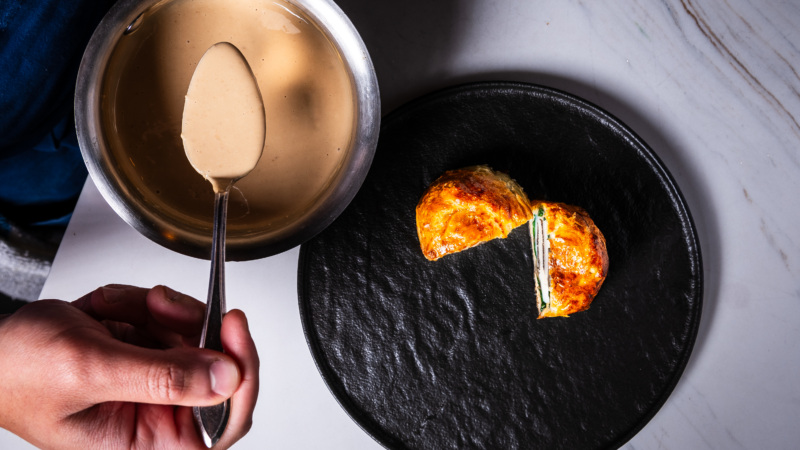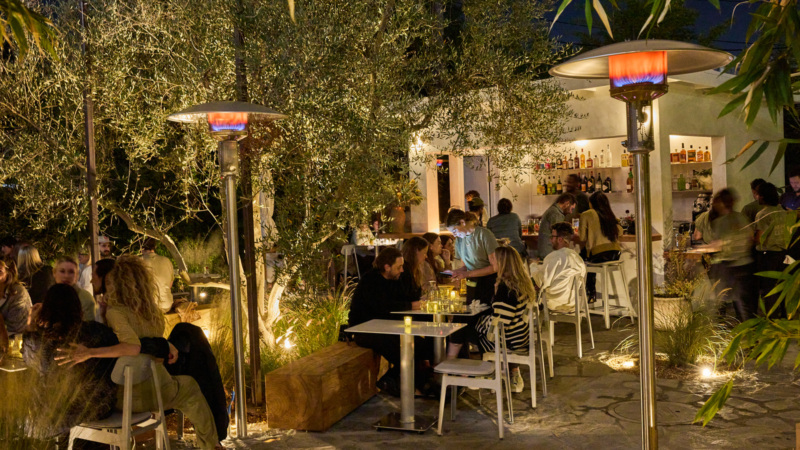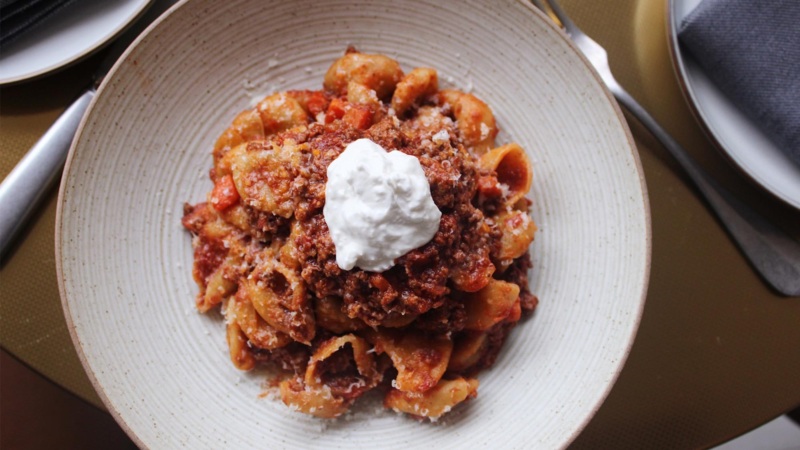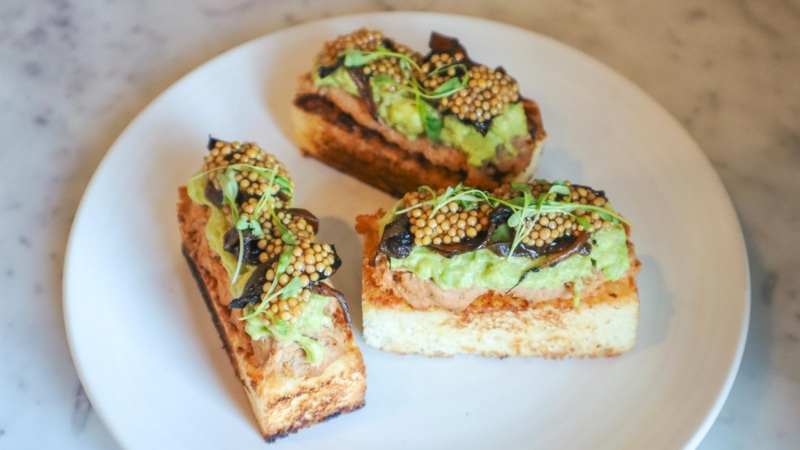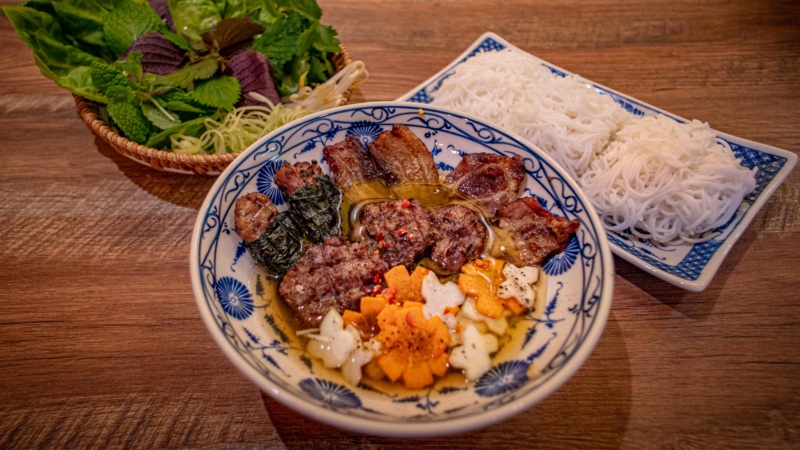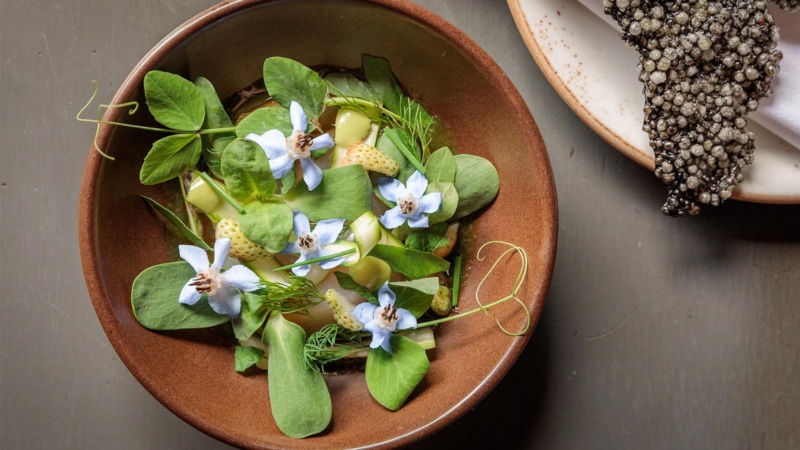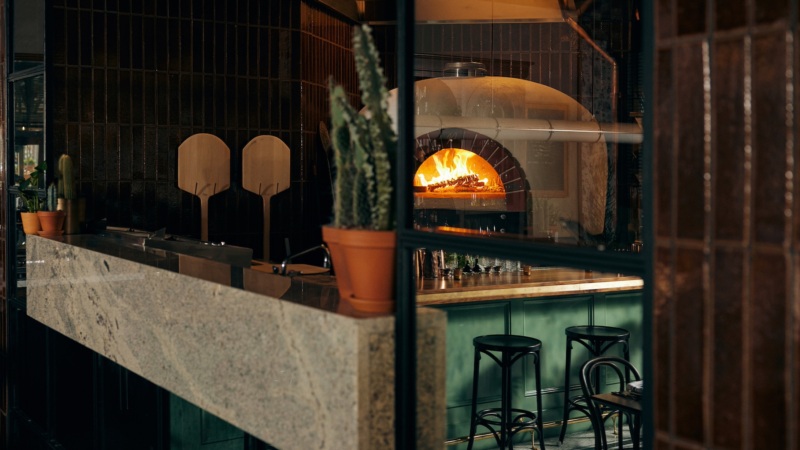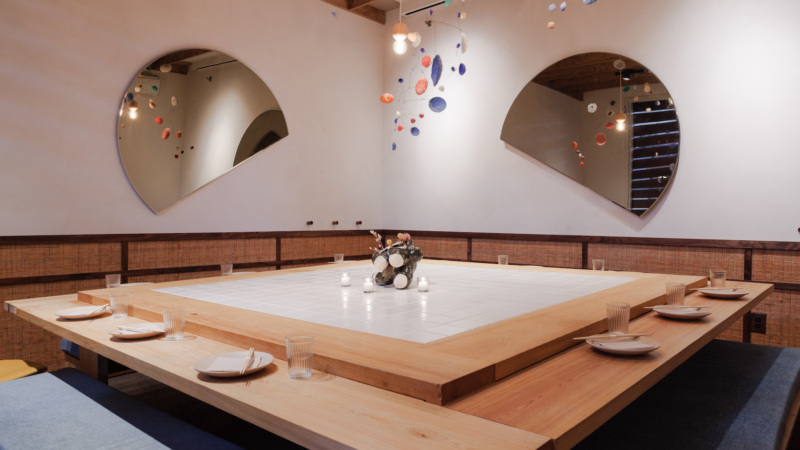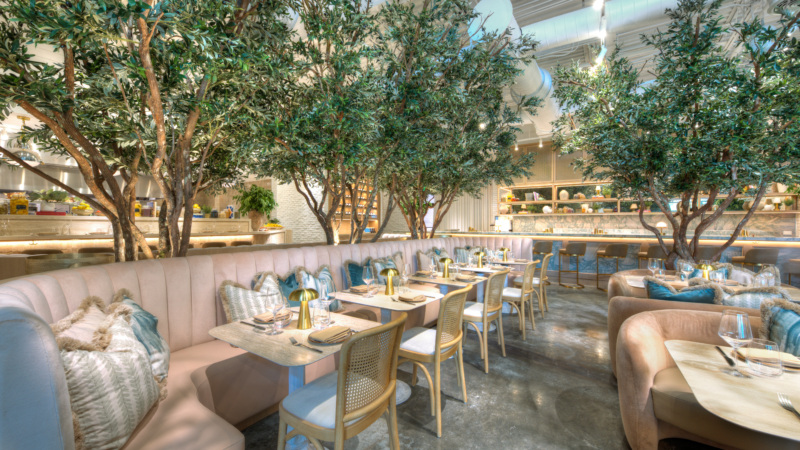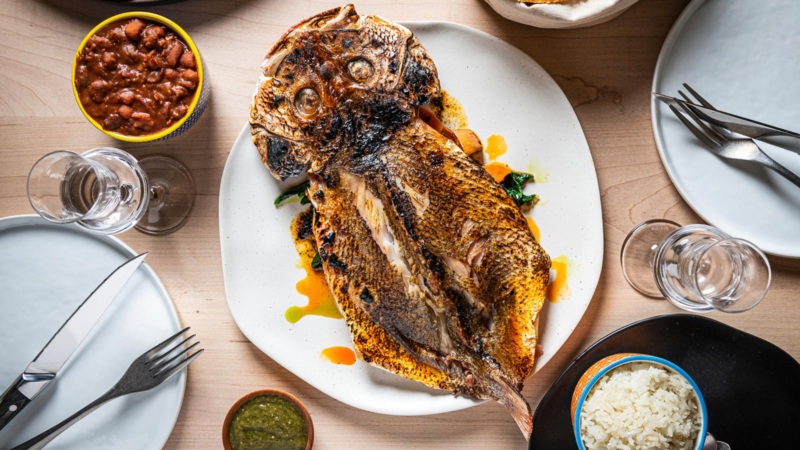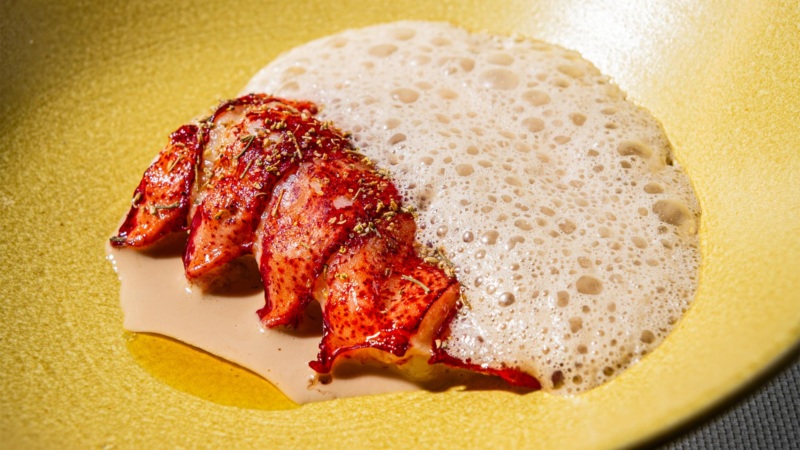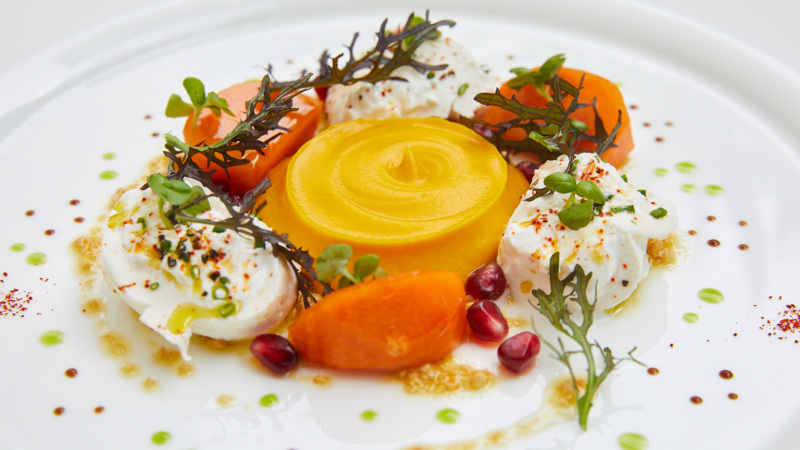

The Best Part of Dinner is the First Seven Seconds
As increments of time go, most people wouldn’t consider seven seconds a great deal to work with. No famous work of art was ever produced within a few seconds (though I’d love to see someone try). The world’s great speeches ebb leisurely into minutes. Even the longest TikToks stretch to a lethargic fifteen seconds.
And yet, so much can happen in such a fleeting moment. The Steve Nash-era Phoenix Suns became known for “seven seconds or less” offenses that pummelled opposing teams. Last July, at a professional bout in Indio, Calif., Seniesa Estrada unleashed seven punches, underlining one of the fastest knockouts in history with a combination that sent her undefeated opponent to the canvas. And – though it felt a hell of a lot longer – it took less than seven seconds for my then-girlfriend to accept my marriage proposal after an unexpected snowfall in North London.
I say this because, what I love – and obviously, long for – most about restaurants, isn’t the food, the service, the bonhomie or ambience that most people typically wax lyrical about, steamy-eyed, on Twitter in reference to a favourite neighbourhood bistro/classic institution/chicken shop.
I find it odd to say aloud, but as our collective worlds have contracted and our interactions with the outside world stutter, what I’ve always treasured most about the experience of physically dining at a restaurant is that flash of time between the moment when I approach the front door and the moments on the other side after I push it open and step inside.
***
Simply put, nothing beats the bliss of stepping into a beautiful, busy dining room.
Now that I’m mostly at home during the pandemic, ordering another takeaway to eat mindlessly in front of the TV, it’s the stimulation of restaurants that I miss most — the irrepressible energy I feel when I’m strolling towards the façade of an old favourite or pacing towards a new place I’ve been meaning to visit for months.
If it’s summer, the windows have been thrown open; sometimes, the exterior is sealed to passers-by behind a single clue – a number on a door, a hand-etched chalkboard — making the moment ultimately more thrilling when it arrives. But there is always an anticipation of the split second between being stranded on an inhospitable pavement and entering a world that was literally conceived and designed down to its last atom to bring pleasure and make you feel special.
The door squeaks open and the panorama of the restaurant reveals itself. The melodious cacophony of a dining room hits before the eye can clock it, a multi-layered symphony of trebly stainless steel on ceramics, a reassuring blanket of lubricated chatter, the bassy drone of an AC unit or the beatific clatter of pans from an open kitchen. The aromas arrive; perfume, brown butter and sage, fish sauce, or a biryani’s saffron-laced clouds of steam.
It’s a moment like few others, utterly ordinary yet no less exhilarating for it, like a crisp breeze blowing through a sticky subway in July; it warms like a momentary glimpse inside a cosily appointed home on a winter stroll.
And as the pandemic changes the dining landscape for a captive audience stuck at home, the value of restaurants becomes clear as much for their ability to exist as third spaces fertile with possibilities, as much as places that can serve you an expertly cooked piece of fish or a plate of noodles with correct wok hei. We realise that we love these places as much for the people and the intangibles that make up the experience of eating out.
***
It has always been a tremendous privilege to be able to allow others to take care of dinner while in the company of someone you may or may not like. The ambiguity of the latter is deliberate – not every dinner comes up roses. You may, for example, be dining with a friend’s new significant other who also moonlights as #NotAllMen guy when discussing matters of basic parity, or a business contact more interested in scoping the room for more important people than the one in front of them.
During such occasions, it’s absolutely worth noting that those seven seconds may be the only pleasure you derive from the evening. If you’re sharing the company of someone you appreciate (and post-pandemic, dear god, please let us only spend our precious restaurant moments with those we like), either way, the sensory pleasure of being ensconced head-to-toe in the swaying lilt of a busy dining room, inhaling aromatic lungfuls of butter or garlic or grilled meat, and reveling in the details – the graceful nightly ballet of the front of house, or soft lighting that makes everyone look 15% more attractive – never diminishes, and is the one untarnished pleasure, regardless of how the evening actually pans out.
It’s a momentary pleasure that’s universal to every restaurant, whatever your dining kinks may be. In fact, the commonality between all restaurants means that the experience is familiar, even when it’s unfamiliar.
***
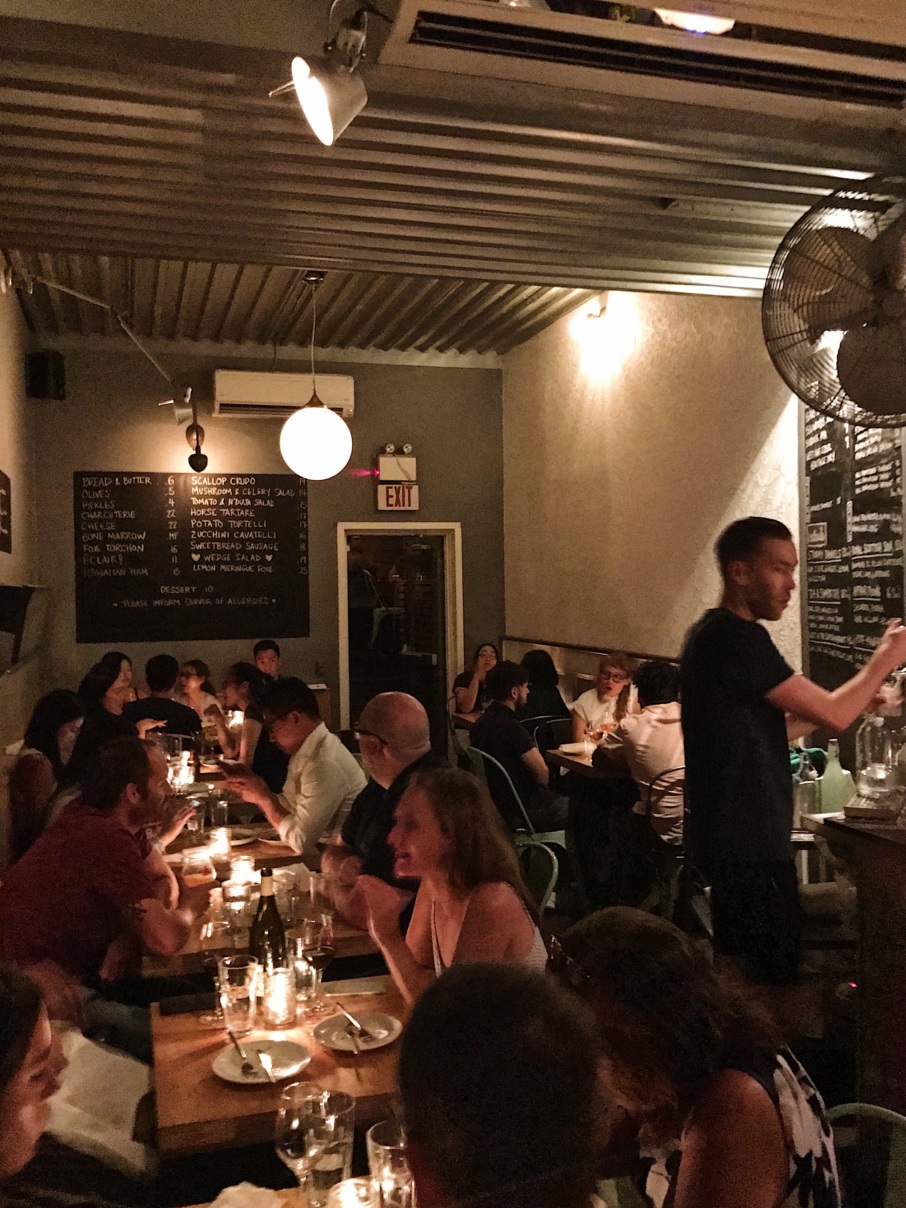
Regarding kinks: Perhaps you lean towards uproarious canteens, or chic bars proffering low-intervention wines; you may also favour the kind of place with soaring ceilings and enough Tom Dixon pendant lights to be visible from the international space station. All offer their own particular pleasures.
While each restaurant bears its own, unique seven-second signature, a few – at least for me – linger in the memory. In New York, Atoboy’s stark room clad in poured concrete is undeniably somber, almost harsh in intent, but the restaurant struggles to contain an effervescence and generosity that spills out in Junghyun Park’s soulful Korean dishes and each server’s precise, deliberate movements.
In Toronto, I waited three hours in line for a solo dinner on the Black Hoof’s penultimate night – each passing minute (and there were plenty) only heightened the anticipation, and experiencing the room full of regulars, friends, and well-wishers in a virtually perfect restaurant (one that could exist anywhere in the world, yet rooted to Trinity Bellwoods) as a food tourist felt like an absolute privilege.
And at home in London, the understated grandeur of the dining room at St. John is not by accident; the thrill of being ushered to a white linen-clad table in a room stripped of ornaments, airs, and anything that could conceivably obfuscate the sheer pleasure of breaking bread, may more accurately be described as sheer joy. The happy clatter and conversation of the room recedes; those precious seconds set the tone for what’s still a seminal experience.
***
It’s said that of all the senses, the perception of time differs since it cannot directly be perceived and must be reconstructed by the brain. An array of theories and corresponding experimental data sets have attempted to verify – with varying degrees of success – the effect of different stimuli on the perception of time, with a commonly-revisited hypothesis being that long periods of time are most frequently underestimated, while shorter periods are overestimated.
There’s evidence that temporal perception can be affected by stimulus motion, with the effect that intervals of time with a greater number of events jammed in between are perceived as being longer. In other words, specious time — those seven seconds — is experienced as a much longer period when presented with a rush of sounds and sensations. And there’s little that stimulates quite like stepping into a busy restaurant.
Experienced retroactively, our favourite moments can stretch endlessly, playing in an endless loop, chopped and edited as we like, cut into an idealised version of everything that we love and miss that takes place as a slowed-down panorama, our very own sensory highlight reel. I replay those moments often – sometimes it’s idleness, sometimes to remind me of what awaits on the other side.
The moment I replay the most often when I think about returning to restaurants is, I suspect, a common one, and not the grand homecoming some might fantasise about. It’s a warm spring evening – for that is when I’m most hopeful that we’ll be able to step into dining rooms again – and I’m joining my wife and a couple of friends for dinner at our favourite place a short stroll from our apartment.
As we approach the restaurant, we see the familiar orange glow of the dining room through the darkness, becoming larger as we step onto its wooden patio from the street. Inside, people are sharing food and wine, and the noise of the room is barely contained by the walls; I clock our usual server, who smiles when she sees us approach, and we smile back because we know the next two hours will be wonderful. We step towards the door, gently push it open, and as we step inside, we let the dining room envelope us entirely.
David Paw is Resy’s International Editor — follow him on Instagram. Follow Resy, too.
Discover More


